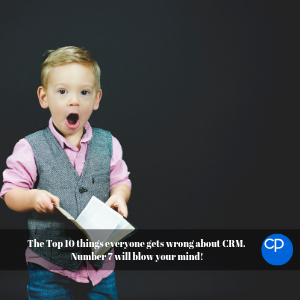Customer Relationship Management (CRM) – has been described as “the systems and processes that support the acquisition, retention and development of long term, profitable customer relationships.” OK mainly by me but put that way, what could possibly go wrong?
Based on 25 plus years of CRM implementation here are the top 10 “gotchas” for anyone involved in CRM. The mistakes that mean that a significant number of CRM initiatives are costing more than they are generating in increased profits.
- Thinking CRM is software – it isn’t!
- Making the CRM project an IT project
- Thinking CRM is a “project” with a single fixed end date. Want to find out more about this? Why not sign up to our STEP workshop?
- Not recognising that perfect data is not economically viable
- Automating bad processes, in the hope that it will make a good CRM system
- Believing CRM adoption starts with the users
- Thinking CRM is capital expenditure when it should be operating expenditure. Click here to find out about CRM-as-a-Service.
- Spending money to change software, instead of changing user behaviour
- Importing too much old data into a new CRM system
- Believing that a YouTube training video can deliver the same results user education.
A list of 10 mistakes we have helped our clients avoid, as they continue to improve the way they acquire retain and develop long term profitable customer relationships. However, 25 years of success are not something we can rest on. To keep learning we have to experiment and try new things. Hence the structure of this blog.
A challenging title and the use of lists are techniques used across the net to capture your attention. You may like or dislike it; however, it is difficult to argue with its effectiveness. The structure is designed to present information in a format that is optimised and draws the reader towards more pages and articles. As Stephen Poole in the Guardian says:
“Psychologically, the listicle is seductive because it promises upfront to condense any subject into a manageable number of discrete facts or at least factoids. When you embark on reading an ordinary article, you have no way of knowing how many things it will tell you. Maybe 15, maybe two. Frustrating. Plus, if you’re reading online and it’s more than a single screen long, you can’t be sure when it’s going to end.”
Does it work? Should it be shorter or longer? Let us know in the comments below.





